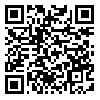BibTeX | RIS | EndNote | Medlars | ProCite | Reference Manager | RefWorks
Send citation to:
URL: http://journal.nkums.ac.ir/article-1-498-en.html
Background & objectives: Teenagers more than any other group engage in a range of risky behaviors that could be have a high price for them, their family and community. The present study aimed to investigate the role of behavioral inhibition system (BIS), behavioral activation system (BAS) and its components fun seeking, reward response and drive in predicting risky behaviors. Materials & Methods: This research is a correlation study. The population of this study was all the students in third grade of high school. Among them 270 students were selected by multi-stage random sampling. Variables were measured using Young's Risk Behaviors Scale (YRBSS) and BIS/BAS Scale of Carver & White (1994). The data were analyzed by SPSS-19 and using Pearson correlation and multivariate regression. Results: Significant positive correlation was found between BAS, fun seeking and reward response with risky behaviors (p<0/01). There was no significant relationship between drive and BIS with risky behaviors (p>0/05). Multivariate regression analysis with enter method showed a statistically significant multiple relationship between predictor variables and the criterion variable (MR=0/23, p<0/01). The results using of stepwise method showed that among the four predictive variables, only fun seeking is significant in predicting risky behaviors ( = 0/20, p<0/001). Conclusion: The high sensitivity of the BAS, fun seeking and reward response increases the likelihood of risky behaviors associated with them. Fun seeking has the most important role in predicting risky behaviors.
Received: 2015/06/15 | Accepted: 2015/06/15 | Published: 2015/06/15
| Rights and permissions | |
 |
This work is licensed under a Creative Commons Attribution-NonCommercial 4.0 International License. |





